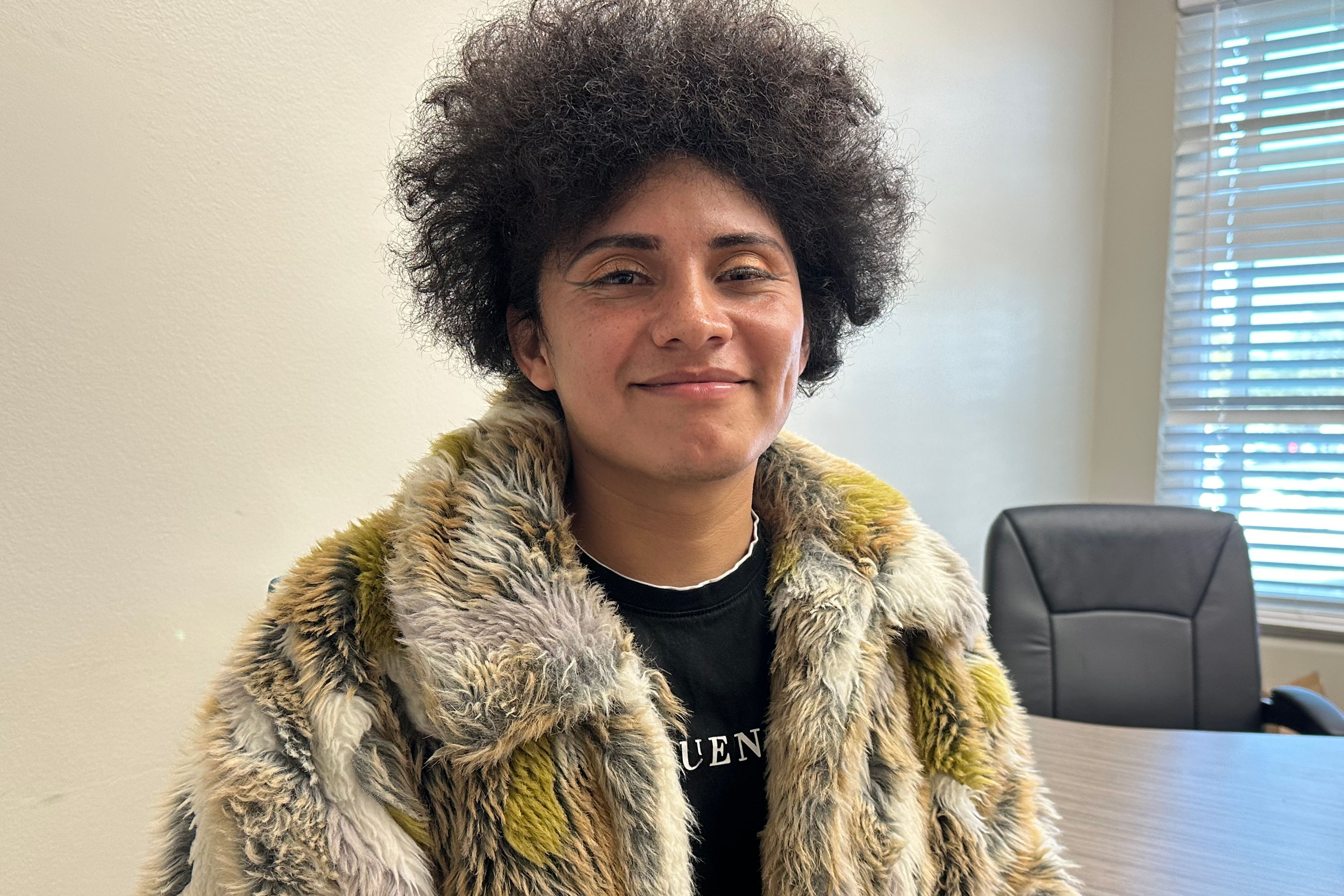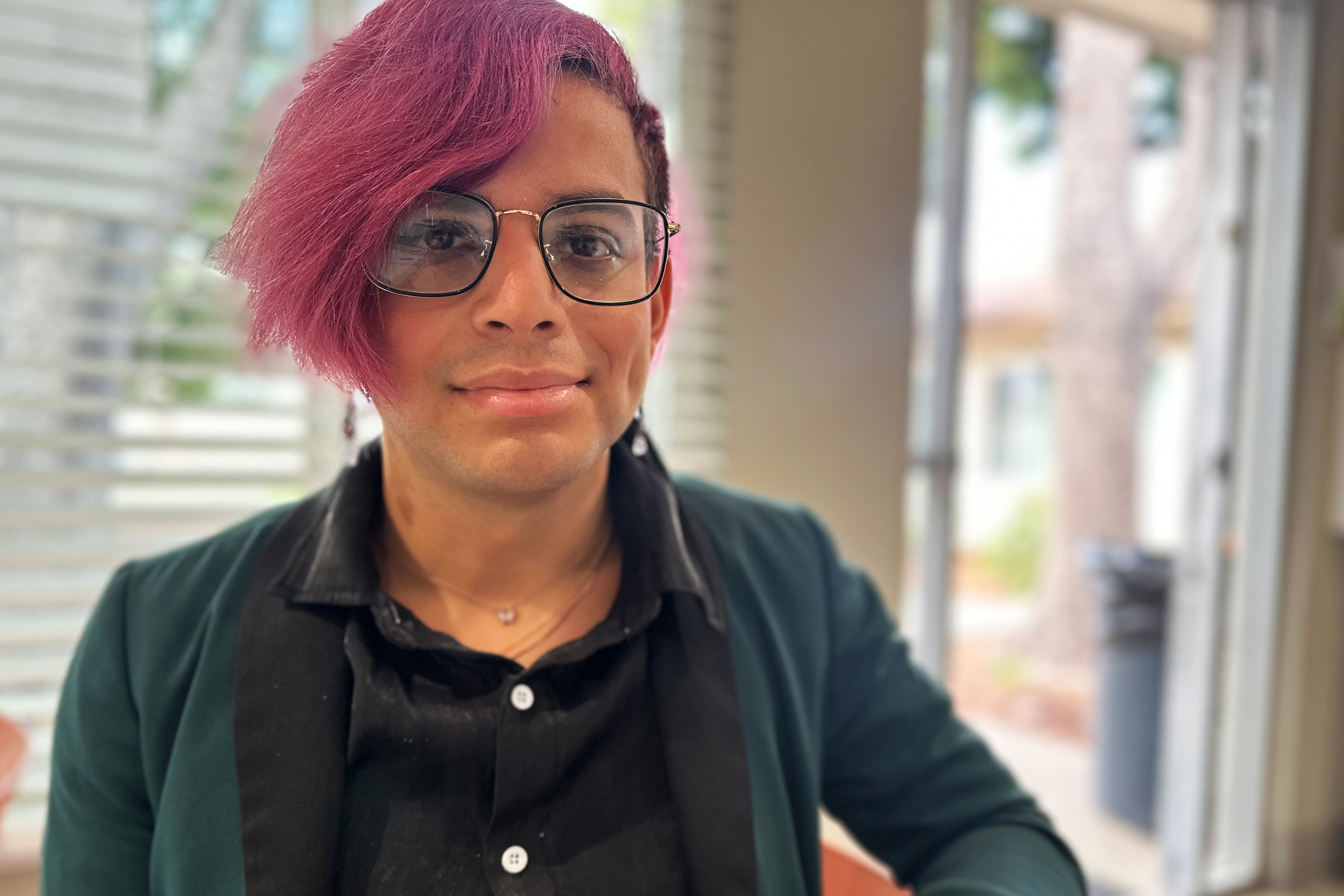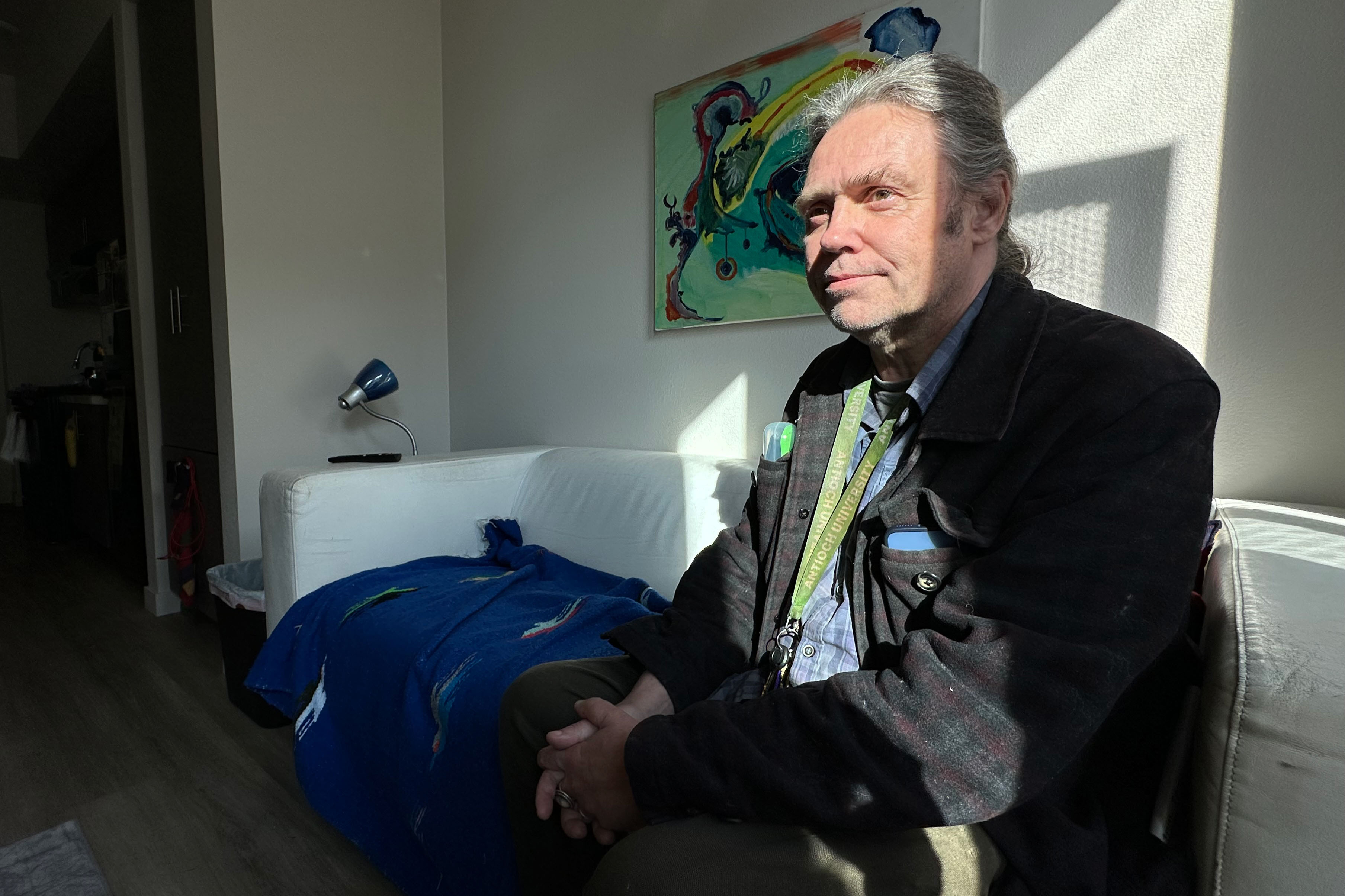ALTADENA, Calif. — As flames engulfed a close-by canyon, dozens of residents in a sober-living residence fled to an unoccupied constructing about 30 miles south. The evacuees, a lot of whom had been beforehand homeless, watched helplessly as their residence burned on reside TV.
Once they awoke on air mattresses the following morning, loss set in. Some feared uncertainty. Others had been jolted again to lives they thought they’d left behind.
“I had nothing but the clothes on my back. It just brought back all of those feelings of being homeless and a drug addict,” stated one resident, Sean Brown. “Kind of like I was back at square one.”
The big two-story Altadena home, recognized to employees and residents as Artwork Home, was surrounded by fruit bushes and rugged mountains. For a lot of, it was a secure area that enabled them to realize and preserve sobriety, rebuild relationships, and maintain down jobs.
Brown, 35, was amongst practically 50 folks displaced in January after the large Eaton Hearth destroyed one property and broken one other operated by the nonprofit Los Angeles Facilities for Alcohol and Drug Abuse. Supported by public {dollars}, the group supplies housing and behavioral well being remedy to folks fighting dependancy, many who had been residing on the streets. Operators say each properties are uninhabitable and that they’re trying to find everlasting housing for these displaced.
“Our residents are still in temporary lodging. Right now we’re looking for something on an interim basis, but we still need to identify long-term housing for them,” stated Juan Navarro, CEO of the nonprofit. “And we need even more beds. We’re seeing even bigger demand for treatment and services after the fires.”
Within the weeks since one of many nation’s costliest pure disasters, it’s change into evident that the Los Angeles wildfires haven’t solely displaced individuals who had dug themselves out of homelessness and gotten into housing, but additionally dealt a blow to the area’s homelessness response. That far-reaching system of care fashioned by authorities businesses and native nonprofits has been buoyed by billions of {dollars} from the town, county, and state lately to fight California’s homelessness epidemic.
Now, wildfires are including strain to a system already below super pressure in getting chronically homeless folks indoors. Homeless service operators and avenue drugs suppliers have been placing strain on state and native leaders to allocate extra funding to accommodate folks on the streets, however they’re working up in opposition to competing calls for for wildfire restoration — and tighter budgets.

“Many of the people we work with have already lost everything and they’re trying to rebuild their lives, and now there’s a whole other group of people doing the same thing and competing for the same resources,” stated Jennifer Hark Dietz a licensed medical social employee and the CEO of PATH, which supplies companies and housing for homeless folks.
In recent times, state and native leaders have leveraged unprecedented investments to open 1000’s of shelters and non permanent and everlasting items. That’s helped Los Angeles County and the state notch significant good points, whilst greater than 187,000 folks stay homeless in California, together with 75,000 folks throughout Los Angeles County.
The 2024 homelessness tally confirmed a forty five% improve within the quantity of people that up to now yr moved off the streets into everlasting housing, and the quantity who moved from tents into non permanent housing rose 32%, in response to Va Lecia Adams Kellum, CEO of the Los Angeles Homeless Providers Authority, which leads the countywide homelessness response system. That’s practically 30,000 everlasting housing placements throughout Los Angeles County.
And whereas homelessness rose 18% nationwide from 2023 to 2024, in response to the newest federal estimate, it elevated solely 3% in California. Extra strikingly, Los Angeles County decreased total homelessness, albeit barely.
The variety of folks residing outdoors fell 5.1% in Los Angeles County, and within the metropolis of Los Angeles, the variety of unsheltered folks dropped 10.4%.
That arduous-fought progress is now in peril because the wildfires displaced tens of 1000’s of Los Angeles residents and destroyed greater than 16,000 constructions. Inexpensive housing, already briefly provide, is being additional strained.
Previously homeless individuals who have skilled dependancy, home violence, or psychological sickness now fear they gained’t be prioritized for placements, regardless of shedding their houses and qualifying for state and native homelessness initiatives to get folks indoors. Many homeless individuals who have lengthy waited for housing might be pressured to attend even longer, as extra displaced folks face homelessness and compete for expensive housing.
Homeless Once more
It’s unclear what number of previously homeless persons are homeless once more. Avenue drugs suppliers and different front-line employees say some are quickly residing in resorts, whereas others moved in with associates or members of the family.
There’s proof that some have fallen again into homelessness.
“We’re already seeing some people have moved into their vehicles because they don’t have the money to pay for even temporary housing,” Adams Kellum stated. “Before the fires, we were already seeing very vulnerable people unable to manage their rents, so this competition for housing puts people at even greater risk for homelessness.”
Adams Kellum stated coordinating sources and companies throughout an enormous area has led to main progress however that more cash is required to assist transfer folks from short-term to everlasting housing.
For now, residents of the burned-down Artwork Home might be allowed to reside in an empty constructing in Santa Fe Springs that the nonprofit had deliberate to redevelop for residential remedy, Navarro stated. He stated the nonprofit is searching for extra steady housing for these displaced however that rehousing them at Artwork Home stays out of attain for now.
Residents grieve the lack of the Artwork Home’s transformative setting, which they name an “empowerment campus.” Brown stated that he has embraced that ethos, whilst he has been displaced and stays traumatized by the wildfires. He’s presently working two jobs and taking lessons towards a bachelor’s diploma.


Paul Rosales, a 24-year-old in restoration from meth, stated Artwork Home was a spot of therapeutic. “That’s the place I discovered myself; it’s the place I constructed my restoration. There was a fantastic orange tree, and the mountains had been only a brief stroll away the place you possibly can meditate and watch the sundown.
“It was away from Skid Row. I knew I was safe,” Rosales stated. “That’s all gone now.”
Residents say they’re grateful they aren’t on the streets, however nervousness grows by the day, particularly for queer and transgender individuals who had fashioned a group there.
“It’s constant stress of not knowing if I’m going to be in a stable housing situation,” stated Alexandria Castaneda, 29, who was hooked on meth however acquired sober after getting indoors.
Battle for Assets
Sarah Hoppmeyer, chief program officer for Union Station Homeless Providers, which supplies housing for folks on the streets, stated she worries about dwindling sources. She and different suppliers harassed the significance of not overlooking folks presently caught in homelessness, a lot of whom have been ready years for housing.
“We don’t want the wildfires to de-prioritize people who were already experiencing homelessness,” she stated.
Elected leaders have pledged to protect the good points Los Angeles County has made in decreasing homelessness by allocating present sources and demanding extra. A number of voter-approved initiatives in Los Angeles are essential, they are saying, however so too is lobbying for state help.
“Without continued and expanded support and resources, we risk losing ground” in decreasing the variety of folks residing on the streets, stated Los Angeles County Supervisor Kathryn Barger, chair of the county board.
Earlier large fires have led to will increase in homelessness, together with in 2018 in Sonoma County and in 2024 on Maui, whose homelessness price soared the yr after fires.

State Sen. Sasha Renée Pérez, a Democrat whose district contains components of Los Angeles County that burned within the wildfires, stated she is going to proceed urgent for added homelessness funding as a member of the Senate finances committee. Whereas Gov. Gavin Newsom’s administration says the state has plowed an unprecedented $27 billion into native homelessness response and prevention initiatives, he didn’t embody any new cash for battling the homelessness disaster in his proposal this yr.
“Unfortunately, this year we didn’t see additional money being placed into that fund,” Pérez stated. “But we have to keep making these investments.”
Newsom stated Monday the state shouldn’t proceed to “fund failure.” He stated he’s open to negotiations with cities, counties, and state lawmakers as long as any new homelessness funding comes with higher accountability, which means that native governments use the cash to clear encampments, dismantle tents, and cut back unsheltered homelessness.
Newsom officers harassed that the state finances is tight — it’s narrowly balanced and below higher pressure than in earlier years, with threats from the Trump administration and the potential lack of essential federal funding for applications resembling Medicaid. The governor stated he’s “hopeful that we can land on an agreement,” however he warned the state may claw again funding if native governments aren’t adequately addressing avenue homelessness.
“We have been too permissive as it relates to encampments and tents. We need them cleaned up,” Newsom stated. “We’re providing unprecedented support. Now we need to see unprecedented results.”
Meeting member John Harabedian, one other Los Angeles-area Democrat, stated extra homelessness spending is essential for wildfire victims and to proceed combating the disaster statewide.
“Those folks who were already homeless, who just got into some sort of housing stability but then lost it again — they’re going to need immediate attention,” he stated. “Our system is failing people.”
This text was produced by KFF Well being Information, which publishes California Healthline, an editorially impartial service of the California Well being Care Basis.




